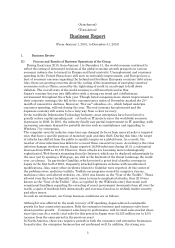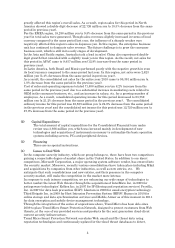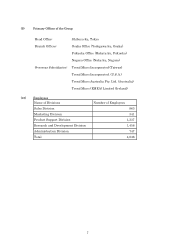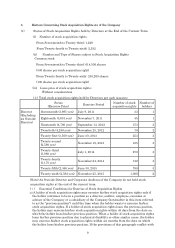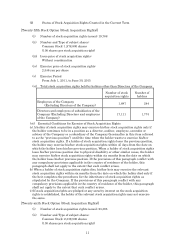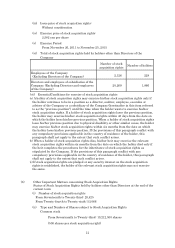Trend Micro 2010 Annual Report Download - page 1
Download and view the complete annual report
Please find page 1 of the 2010 Trend Micro annual report below. You can navigate through the pages in the report by either clicking on the pages listed below, or by using the keyword search tool below to find specific information within the annual report.
3
(Attachment)
(Translation)
Business Report
(From January 1, 2010, to December 31, 2010)
1. Business Review
(1) Process and Results of Business Operations of the Group
During fiscal year 2010, from January 1 to December 31, the world economy continued to
reflect the string of downward revisions of the global economic growth prospects in various
economic indexes due to turmoil in Europe and fiscal austerity. Unemployment and consumer
spending in the United States have still seen no noticeable improvement, and Europe faces a
host of economic concerns regarding the Ireland and Southern European countries' debt crises.
Also, there are growing concerns about the cooling of the momentum of emerging countries'
economies such as China, caused by the tightening of credit in an attempt to hold down
inflation. The overall state of the world economy is still uncertain and in flux.
Japan's economy has run into difficulties with a strong yen trend and a deflationary
environment throughout the whole year. Though listed companies have shown improvement in
their corporate earnings, the fall in the consumer price index of November marked the 21st
month of consecutive declines. Moreover, "Eco-car" subsidies, etc., which helped underpin
consumer spending, will end during the year. The real economy has plateaued and the
Japanese economy still seems to be a long way from a clear recovery.
In the worldwide Information Technology Industry, most enterprises have been forced to
greatly reduce capital spending and cut back on IT projects since the worldwide economic
depression in 2008. In 2010, the industry finally saw partial improvement in IT spending, with
increasing consumer demand for portable devices such as smartphones and upgrading to
Windows 7 by enterprises.
The computer security industry some time ago changed its focus from mass attacks to targeted
ones that have a specific purpose of monetary gain and data theft. During this time, the target
of attacks has shifted from the public to specific targets on a global basis. As a result, the
number of virus infections has fallen for a record three consecutive years. According to the virus
infection damage incident report, Japan reported 16,908 infections during 2010, a substantial
decrease from 2009 as 45,310. However, these attacks are becoming more technologically
sophisticated. Web threats stemming from the Internet, which can be deployed unknowingly by
the user just by opening a Web page, are still at the forefront of the threat landscape the world
over, as always. In particular Gumblar, which received a great deal of media coverage in
Japan in the first half of 2010, frequently attacked legitimate websites with unauthorized
modifications. Also, many other incidents related to Gumblar were reported. At the center of
the problems were malicious toolkits, Toolkits are programs caused by computer viruses,
malicious codes, and altered websites, etc., 2010 was known as the “Year of the Toolkit.”. These
allowed even the least technically savvy users to launch complicated attacks, thus 2010 was
known as the “Year of the Toolkit.” Also, as typified by the Wikileaks story that made such
sensational headlines regarding the revealing of secret government documents from all over the
world, a spate of incidents both domestically and overseas forced us to rethink insider security
and other issues.
In such an environment, our Group business conditions are as follows:
Although it was affected by the weak recovery of IT spending, Japan achieved sustainable
growth for four consecutive quarters. Both the enterprise business and consumer sales have
shown positive growth. Consumer sales keep its performance well in retail sales market share
since last year.As a result, total sales for this period in Japan were 42,325 million yen (a 6.5%
increase from the same period in the previous year).
In North America, there was negative growth in both the consumer and enterprise businesses.
In particular, the enterprise business has not performed well. In addition, the strong yen

